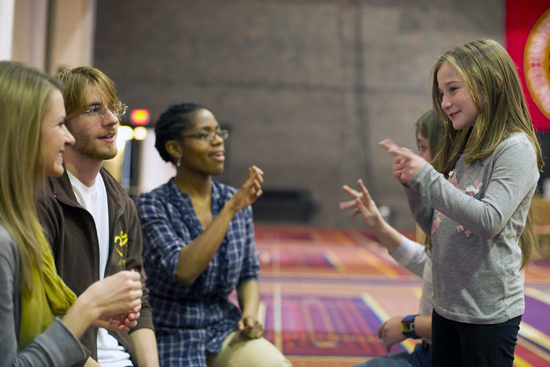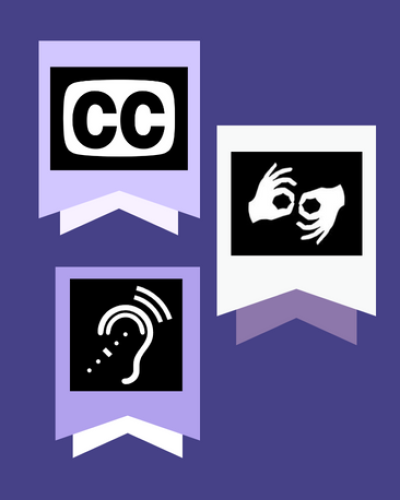At twelve years old, I was gifted my first sketchbook, four graphite pencils, and a moldable eraser. I spent that entire day drawing random household objects, beginning with the old wood furnace that heated my childhood home. Ten years later, I found myself employed with ASU Project Humanities as a graphic designer. Years of studying, practicing, and perfecting my skills certainly improved the technical aspects of my work.Yet there was an important facet of graphic design I had yet to consider– unconscious bias in the graphic design world.
Unconscious bias, sometimes called implicit bias, is a phenomenon that each individual experiences in one way or another. The University of California San Francisco defines unconscious bias as “social stereotypes about certain groups of people that individuals form outside their own conscious awareness.” In design, this can manifest in myriad ways, often resulting in the representation of a single demographic group. This can be racial, religious, ability, or another facet of one’s identity. This bias can also occur in the assumption of representation of another group that is incorrect due to ingrained stereotypes, misinformation, or misconceptions.
Why is this important to analyze? Well, implicit bias design can further isolate marginalized groups, reinforce stereotypes, or completely ignore a community. Too often, people act on their unconscious biases without recognizing the repercussions of their actions. This showcases the importance of continued learning and intentional diversity in workplaces, allowing for both accountability and increased learning opportunities to identify and rectify bias.
When faced with criticism, it can be easy to justify the behavior or feign ignorance, but such responses do little to improve the situation. Instead, it is important to intentionally listen to a diverse audience, seek feedback, and correct when needed. An upcoming Project Humanities event illustrates this very situation.
A Humanity 101 Founder approached Project Humanities proposing an event regarding the spectrum of hearing abilities and, more specifically, dismantling incorrect assumptions about individuals in these communities. Thus, on Wednesday, March 15th, Project Humanities will host an event called "Dispelling the Myths: The Deaf, the Hard of Hearing, and the Deafblind" in conjunction with the Arizona Commission for the Deaf and the Hard of Hearing. This program will include Deaf, Hard of Hearing and DeafBlind/CVHL members and experts of communities representing intersectional perspectives.
As a designer, I have to be mindful of selecting and creating imagery that immediately showcases an event’s focus to viewers. With limited knowledge of this community, I selected an image of what I believed to be a hearing aid, but upon collaboration with the Arizona Commission for the Deaf and the Hard of Hearing, our event partners for this program– I learned that the image was not an actual hearing aid but rather a fake and inaccurate representation of a hearing aid. Now this misstep may seem minor to someone outside this community, but how someone’s identity is represented is also how it is respected, or not. As designers, we are responsible for ensuring that our designs are respectful, accurate, and uplifting to those whose voices we are amplifying.
In my experience, I could choose to explain why I made the decisions or feign ignorance, but either does little to improve the situation for anyone involved. Rather, these situations provide a pathway towards progress. There are times to talk, there are times to listen, and there are times to conduct your own research. No one is immune to ignorance, but when one is made aware of a situation, each individual has a choice in their response. Through this experience, I have learned, I have learned more about this Deaf and the Hard of Hearing community, and I have learned more about how important it is to consistently search out and dismantle my own unconscious bias.
Designers have a responsibility to create products and services that are accessible to all users. Unfortunately, this unconscious bias in design can lead to exclusion and misrepresentation. Critical thinking and seeking guidance from underrepresented communities are key as these actions will prevent designers from acting out of assumptions or lack of knowledge.
Dispelling the Myths: The Deaf, The Hard of Hearing, and The Deafblind will be hosted at the Arizona Commission for the Deaf and the Hard of Hearing in Fall 2023. This program will include Deaf, hard of hearing, and DeafBlind/CVHL members of our communities who represent intersectional perspectives. Discussion topics will focus on identity, accessibility, oppression, language, and others topics relevant to the panelists.
Inclusive Graphic Design Resources:
- https://interaction18.ixda.org/program/talk-designing-for-deaf-people--for-everyone-actually-van-driessche-marie/
- https://uxdesign.cc/tips-on-designing-inclusively-for-auditory-hearing-disabilities-faf5a7b2ae40
- https://www.nad.org/about-us/position-statements/guidelines-for-media-portrayal-of-the-deaf-community/#:~:text=Historically%2C%20the%20media%20has%20misrepresented,the%20rest%20of%20the%20population.
- https://accessibility.blog.gov.uk/2016/09/02/dos-and-donts-on-designing-for-accessibility/
Sources:

